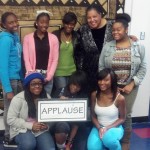 Melanie Andrews is the director of the internationally acclaimed Washington Prep High School theatre program in South Los Angeles. A native of Compton, California, she received her MFA in theatre from the University of Southern California and has worked as a director in China, Germany, Canada, and Mexico, as well as at regional theatres in the U.S. A documentary on the Washington Prep theatre program’s Shakespeare in Watts (a rendition of Romeo and Juliet) production is screening on Sunday, February 17th at Los Angeles’ Pan African Film Festival. Dr. Andrews is also a teacher-partner for the L.A. County Human Relations Commission’s Washington Involving Neighborhoods program and Black Skeptics Los Angeles’ 2013 scholarship fund.
Melanie Andrews is the director of the internationally acclaimed Washington Prep High School theatre program in South Los Angeles. A native of Compton, California, she received her MFA in theatre from the University of Southern California and has worked as a director in China, Germany, Canada, and Mexico, as well as at regional theatres in the U.S. A documentary on the Washington Prep theatre program’s Shakespeare in Watts (a rendition of Romeo and Juliet) production is screening on Sunday, February 17th at Los Angeles’ Pan African Film Festival. Dr. Andrews is also a teacher-partner for the L.A. County Human Relations Commission’s Washington Involving Neighborhoods program and Black Skeptics Los Angeles’ 2013 scholarship fund.
What is your background in theatre?
I got into theatre by accident. I was a state champion debater for Compton Unified. As part of a work study program in high school I got a job at the Ebony Showcase theatre (now the Nate Holden Company) in South L.A. I started with the production Norman is That You (with Redd Foxx and John Amos). The girl that was playing a prostitute had an accident and I decided I would fill in for the part. I got the laughs and fit the suit and that is how I got the part. I was also encouraged by Ethel Waters when I performed at the Pasadena Playhouse. I taught at CSULB, Compton College, and Emory University in Atlanta. I am also involved in using the arts for the peace movement and human rights, especially as it pertains to human/sexual trafficking and violence against women. For the past several years I’ve been engaged with helping girls and women understand the impact of prostitution and sexual trafficking in local communities of color from a black feminist perspective.
What is the climate of local youth theatre in South L.A.?
Washington Prep is the little school that could. We have won over forty awards in theatre competition. I found kids that were hungry to do theatre. I’m classically trained and have brought that training to this school. It’s not necessarily in line with the norm of high school drama. Some of our acclaimed productions have been Zoot Suit and Positive Secrets, a drama on HIV/AIDS based on the voices and experiences of youth of color. We also mounted ‘Stop” a production on the sex trafficking of girls. We won five awards at the California State festival. Our other claim to fame is that 90% of the students involved in this program go to four year universities like Fordham, NYU, UCLA, etc. This program has boosted their academic success and college matriculation prospects.
What other productions are in the works?
Unfortunately, none of our productions are being funded. We don’t necessarily have the support of the administration. We’ve been told that our stuff is “nice” but that it doesn’t make money. The school has decided to go in a more “hip hop” direction. We got zero funding for Black History month. Like many teachers I’ve had to go into my own pocket to fund these productions. However, I believe these productions are necessary for students to know the Eurocentric canon in order to survive, navigate higher education and be culturally literate. Our students will be able to perform in different contexts and know their craft. Several years ago, I realized we had an excess of talent and a dearth of funding and that’s why I partnered with the British Academy program. I’ve had the pleasure of working at numerous Shakespeare festivals (in fact, I’m one of the few African Americans that has worked as a stage manager, dramaturge, actor and director for virtually every Shakespeare play in the Folio). The cast of Romeo and Juliet was mentored by members of the BA program. The students were able to learn the language of Shakespeare from actors that were immersed in it. They also received training from actors in the Royal Shakespeare Company. These professionals saw them as being important and the students lived up to those expectations. Now we have over one-hundred mentors.
What is the most rewarding part of working with youth at Washington Prep and how can the community help with this work?
Having them in class you get to see that everything that exists in the microcosm of the community exists here too. Everyone has a “heart light”—you just need someone to turn it on. In theatre we activate it with high academic expectations and the students rise to the challenge. They start going to class, they become community activists, they learn that they have power, and they demand things. Most of our kids are now in the top ten of their classes. They are focused on college, realizing that they not only have a future, but that they have a gift. So I welcome community members who can come and be mentors. We have costumes to design and sets to build. We need fundraisers, we need sets painted, and most of all we need the kids to be supported. We have kids in foster care, kids who are homeless and surfing on couches, and we have kids that are dealing with the random death of loved ones. Sometimes in rehearsals we’ll deal with death, rape, and other hard issues and they are able to connect their life experience with that. Romeo and Juliet is so real to them because they are living through it. I grew up in Compton. My father was murdered when I was young, and because of your mother, Yvonne Divans Hutchinson, and others guiding me I made it through that. Teachers like her told me what a difference I could make. I could have become suicidal or a drug addict. I’ve had multiple careers, but I come back to teaching because we are needed more now than ever. My students have gone on to be professionals in theatre, film, business, and politics and that is one of my greatest rewards.
Sikivu Hutchinson is editor of blackfemlens.org, freethoughtblogs.com/blackskeptics.org, Moral Combat: Black Atheists, Gender Politics, and the Values Wars









 Recently, in a class discussion about youth not having a voice at school, my students gave me an earful about racially disparate discipline policies. They pointed to a culture of disrespect that they believe marginalizes and disfavors outspoken African American students. For many, this culture is rooted in a policing regime that kicks in before they even get to school, buttressed by criminalizing truancy policies that disproportionately target black and Latino youth.
Recently, in a class discussion about youth not having a voice at school, my students gave me an earful about racially disparate discipline policies. They pointed to a culture of disrespect that they believe marginalizes and disfavors outspoken African American students. For many, this culture is rooted in a policing regime that kicks in before they even get to school, buttressed by criminalizing truancy policies that disproportionately target black and Latino youth. 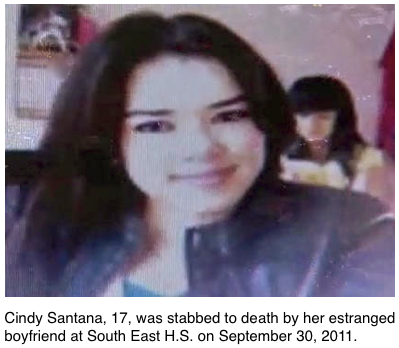 Santana’s murder highlights the deep and abiding threat that violent relationships have for young women. Although many LAUSD Health classes incorporate anti-violence education into their curricula, there is little emphasis on the roots of violence vis-à-vis dominant models of masculinity and femininity. According to a
Santana’s murder highlights the deep and abiding threat that violent relationships have for young women. Although many LAUSD Health classes incorporate anti-violence education into their curricula, there is little emphasis on the roots of violence vis-à-vis dominant models of masculinity and femininity. According to a 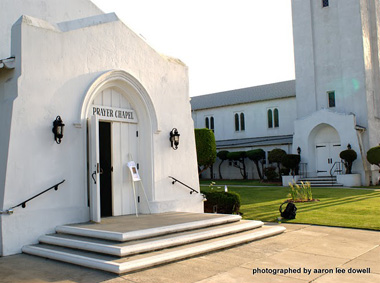 Congregants of Zion Hill Baptist Church in South Los Angeles probably thought Pastor Seth Pickens was certifiable when he proposed a community dialogue with the L.A. Black Skeptics Group. Founded in March of last year, the group provides a safe real time space for atheists, agnostics, freethinkers, humanists, and skeptics of African descent. As the group’s organizer, I had been in conversation with Seth about a forum for several months after interviewing him for my new book Moral Combat. A thirty-something, literary Morehouse College graduate from the East Coast, he was open to the idea of an “interfaith” dialogue from the beginning. As the pastor of Zion Hill since 2009, he seemed deeply concerned about the ongoing national critique of the Black Church’s waning influence (see, for example, Princeton religion professor Eddie Glaude’s widely circulated Huffington Post piece “The Black Church is Dead.”).
Congregants of Zion Hill Baptist Church in South Los Angeles probably thought Pastor Seth Pickens was certifiable when he proposed a community dialogue with the L.A. Black Skeptics Group. Founded in March of last year, the group provides a safe real time space for atheists, agnostics, freethinkers, humanists, and skeptics of African descent. As the group’s organizer, I had been in conversation with Seth about a forum for several months after interviewing him for my new book Moral Combat. A thirty-something, literary Morehouse College graduate from the East Coast, he was open to the idea of an “interfaith” dialogue from the beginning. As the pastor of Zion Hill since 2009, he seemed deeply concerned about the ongoing national critique of the Black Church’s waning influence (see, for example, Princeton religion professor Eddie Glaude’s widely circulated Huffington Post piece “The Black Church is Dead.”).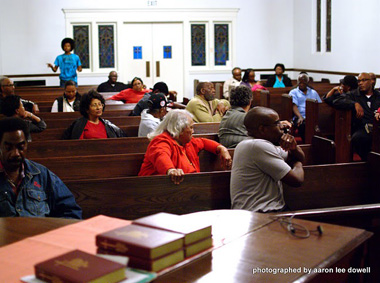 However, analysis of 21st century black religiosity should be situated within the context of deepening social, political, and economic crisis. Faced with double digit unemployment and skyrocketing rates of homelessness, the American dream is even more of a brutal sham for African Americans. In the wake of Obama’s election it is no accident that reactionary forces seek to dismantle what little remains of the American social welfare safety net. Indeed, the decades’ long Religious Right backlash against civil rights, women’s rights, and gay liberation is exemplified by the ascent of Tea Party-style white nationalism. Consequently, to paraphrase panelist Carol Pierce, the Black Church is still something of a “refuge” in a hyper-segregated nation.
However, analysis of 21st century black religiosity should be situated within the context of deepening social, political, and economic crisis. Faced with double digit unemployment and skyrocketing rates of homelessness, the American dream is even more of a brutal sham for African Americans. In the wake of Obama’s election it is no accident that reactionary forces seek to dismantle what little remains of the American social welfare safety net. Indeed, the decades’ long Religious Right backlash against civil rights, women’s rights, and gay liberation is exemplified by the ascent of Tea Party-style white nationalism. Consequently, to paraphrase panelist Carol Pierce, the Black Church is still something of a “refuge” in a hyper-segregated nation. In response, one audience member complained that it was easy to “poke holes” in scripture and Christian belief. But at the end of the day you had to believe in something. Secular humanists believe that faith in supernatural puppet masters are dangerous because we only have one life to live. Feminist atheists believe that social justice based on the universal moral value of women’s right to self-determination (rather than self-sacrifice, domestication, submission, and sexual degradation) is certainly not found in the Bible or the Koran. It is for this reason that the heterosexist, patriarchal hierarchies of Abrahamic religions are especially insidious for black women and LGBT people of African descent.
In response, one audience member complained that it was easy to “poke holes” in scripture and Christian belief. But at the end of the day you had to believe in something. Secular humanists believe that faith in supernatural puppet masters are dangerous because we only have one life to live. Feminist atheists believe that social justice based on the universal moral value of women’s right to self-determination (rather than self-sacrifice, domestication, submission, and sexual degradation) is certainly not found in the Bible or the Koran. It is for this reason that the heterosexist, patriarchal hierarchies of Abrahamic religions are especially insidious for black women and LGBT people of African descent. In her landmark work In Search of Our Mother’s Gardens, Alice Walker wrote: “What did it mean for a black woman to be an artist in our grandmother’s time? Our great-grandmothers’ day? Did you have a genius of a great-great-grandmother who died under some ignorant and depraved white overseer’s lash? Or was her body broken and forced to bear children (who were more often than not sold away from her)—eight, ten, fifteen, twenty children—when her one joy was the thought of modeling heroic figures of rebellion?”
In her landmark work In Search of Our Mother’s Gardens, Alice Walker wrote: “What did it mean for a black woman to be an artist in our grandmother’s time? Our great-grandmothers’ day? Did you have a genius of a great-great-grandmother who died under some ignorant and depraved white overseer’s lash? Or was her body broken and forced to bear children (who were more often than not sold away from her)—eight, ten, fifteen, twenty children—when her one joy was the thought of modeling heroic figures of rebellion?” 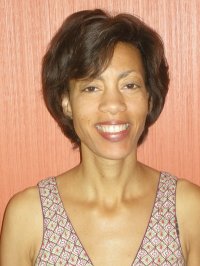 As a radical humanist critic of America’s Christian slavocracy Frederick Douglass once wrote, “I prayed for twenty years and received no answer until I prayed with my legs.”
As a radical humanist critic of America’s Christian slavocracy Frederick Douglass once wrote, “I prayed for twenty years and received no answer until I prayed with my legs.” 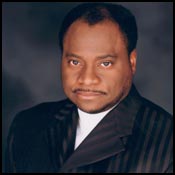 The ATL’s very own ringleader of the prosperity gospel, Long has blazed a trail as an anti-same sex marriage Christian soldier and self-proclaimed “spiritual daddy” to a nationwide army. After the death of Coretta Scott King in 2004, Earl Ofari Hutchinson notes that, “Long’s anti-gay phobia was so virulent that then NAACP president Julian Bond publicly declared he would not attend (her) funeral service at Long’s New Birth Missionary Baptist Church.” A prominent supporter of George W. Bush and his anti-gay policies, Long and several other prosperity gospel predators were the subject of a 2007 federal probe on fiscal mismanagement of their tax exempt status. Launched by the U.S. Senate, the investigation was spearheaded by the Trinity Foundation, a nonprofit “religious media watchdog” dedicated to exposing fraud and financial improprieties within the billion-dollar megachurch industry.
The ATL’s very own ringleader of the prosperity gospel, Long has blazed a trail as an anti-same sex marriage Christian soldier and self-proclaimed “spiritual daddy” to a nationwide army. After the death of Coretta Scott King in 2004, Earl Ofari Hutchinson notes that, “Long’s anti-gay phobia was so virulent that then NAACP president Julian Bond publicly declared he would not attend (her) funeral service at Long’s New Birth Missionary Baptist Church.” A prominent supporter of George W. Bush and his anti-gay policies, Long and several other prosperity gospel predators were the subject of a 2007 federal probe on fiscal mismanagement of their tax exempt status. Launched by the U.S. Senate, the investigation was spearheaded by the Trinity Foundation, a nonprofit “religious media watchdog” dedicated to exposing fraud and financial improprieties within the billion-dollar megachurch industry.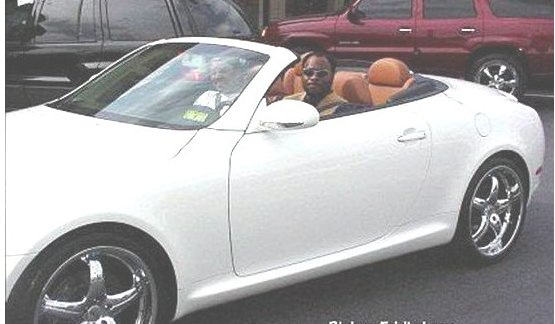 Long’s empire of niche ministries, books, gospel shows and seminars powers a robber baron’s lifestyle of expensive cars, homes and private jets. One of these niche ministries involves spiritual counseling for young men and “delivering” men from homosexuality. According to a former New Birth parishioner, Long evoked themes of hyper-masculinity and required obeisance to himself as divinely ordained patriarch. The trespasses of Long and other good Christian evangelicals was scrutinized in Sarah Posner’s 2008 book
Long’s empire of niche ministries, books, gospel shows and seminars powers a robber baron’s lifestyle of expensive cars, homes and private jets. One of these niche ministries involves spiritual counseling for young men and “delivering” men from homosexuality. According to a former New Birth parishioner, Long evoked themes of hyper-masculinity and required obeisance to himself as divinely ordained patriarch. The trespasses of Long and other good Christian evangelicals was scrutinized in Sarah Posner’s 2008 book  There is silence in the classroom. Even amidst the clockwatching ten minutes-before-the-bell-rings clamor of a typical high school class there is silence, deafening and thick as quicksand. I have asked the class a question about the widespread use of the words “bitch” and “ho” to describe young women of color on campus and several boys are holding forth in response. They are the same four opinionated boys who have been the most vocal throughout these sessions, always ready with a quip, a deflection or, sometimes, serious commentary that reveals deep wisdom. They are bursting with perspective on this topic, but the girls in the room are silent. Some twist in their seats, some study the tops of their desks in calculated boredom, transporting themselves outside of the room, slain by the language of dehumanization. Finally a few girls chime in and say they use the terms casually with friends, as in “my bitch or my ho,” supposedly neutralizing their negative connotations akin to the way they use the word “nigga.” Some claim the words are justifiably used to describe “bad girls” who are promiscuous and unruly, not realizing that black women have always been deemed “bad” in the eyes of the dominant culture, as less than feminine, as bodies for pornographic exploitation.
There is silence in the classroom. Even amidst the clockwatching ten minutes-before-the-bell-rings clamor of a typical high school class there is silence, deafening and thick as quicksand. I have asked the class a question about the widespread use of the words “bitch” and “ho” to describe young women of color on campus and several boys are holding forth in response. They are the same four opinionated boys who have been the most vocal throughout these sessions, always ready with a quip, a deflection or, sometimes, serious commentary that reveals deep wisdom. They are bursting with perspective on this topic, but the girls in the room are silent. Some twist in their seats, some study the tops of their desks in calculated boredom, transporting themselves outside of the room, slain by the language of dehumanization. Finally a few girls chime in and say they use the terms casually with friends, as in “my bitch or my ho,” supposedly neutralizing their negative connotations akin to the way they use the word “nigga.” Some claim the words are justifiably used to describe “bad girls” who are promiscuous and unruly, not realizing that black women have always been deemed “bad” in the eyes of the dominant culture, as less than feminine, as bodies for pornographic exploitation. 




